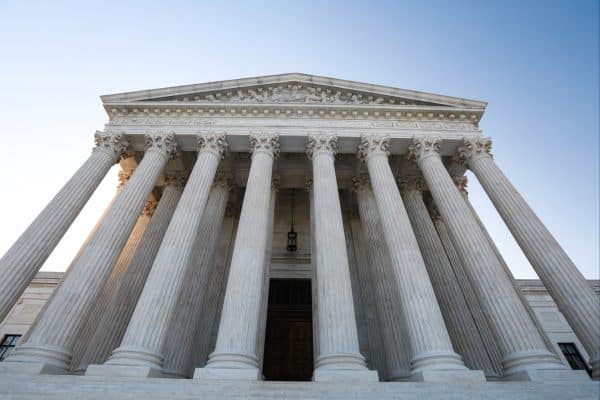By Anthony P. Guettler, Esq., Gould Cooksey Fennell, Vero Beach, Florida
Under Florida’s new Community Property Trust Act (“the Act”), married couples may now establish community property in Florida. Although Florida is not a community property state, a married couple can create community property through a community property trust established under the Act (“CPT”).[1]) The ability to convert appreciated property to community property presents a significant income tax planning opportunity for married couples.
For example, suppose a married couple purchases property for $100 that is titled jointly with rights of survivorship. After the property has appreciated, one spouse dies when the fair market value of the property is $800. The basis of the deceased spouse’s one-half of the property will be increased to $400, and the basis of the surviving spouse’s one-half of the property will continue to be $50.[2] However, if that same property was considered community property for federal income tax purposes, the basis of the deceased spouse’s onehalf of the property will be increased to $400, and the basis in the surviving spouse’s one-half of the property will also be increased to $400 (this is often referred to as the “Double Step-Up”).[3]
An important purpose of the Act is to permit the establishment of community property within the meaning of IRC § 1014(b)(6), which would allow for the Double StepUp.[4] Although there is authority to support the notion that community property established in a common law state under a community property trust will qualify for a basis adjustment under IRC § 1014(b)(6), it is possible the courts will not agree.[5] As with community property established in other common law states that have passed similar community property trust legislation (such as Alaska, Tennessee and South Dakota), it is unclear under current law whether property owned by a CPT will qualify as community property for federal income tax purposes.[6]
It is important to note that the same tax benefits can be achieved (and with more certainty) by titling the appreciated property in the name of the spouse with the shorter life expectancy; however, this is a difficult plan to successfully implement for several reasons. First, IRC § 1014(e) will prevent a step-up in basis if appreciated property was transferred to the deceased spouse within one year of death, and that same property is devised back to the transferor spouse. Second, a spouse may be hesitant to transfer all of his or her appreciated property to the other spouse (who would then be in complete control, could subject the property to creditor claims, etc.). Finally, the spouse with the shorter life expectancy may survive the other spouse. Keep in mind that the basis adjustment rules under IRC § 1014 also apply to property with a basis greater than fair market value (“Loss Property”). For this reason, a CPT should not be used to maintain Loss Property. Finally, any spouses considering a CPT should be aware that the step-up in basis may be eliminated by a change in the law (which has been proposed by the current administration). If that were to occur, the primary benefit of a CPT would disappear. Because of the potential income tax savings associated with the Double Step-Up, married couples with appreciated property will be considering whether to utilize a CPT in their estate planning. The purpose of this article is to discuss some of the issues that may be encountered in planning with a CPT, and to compare ownership of assets through a CPT to other forms of joint ownership.
Can a lawyer represent both spouses in establishing a CPT?
Yes, provided the lawyer complies with the rules of professional conduct (in particular, Rule 4-1.7). To determine whether the representation is permitted, a lawyer will need to understand the considerations involved for the spouses in establishing a CPT. Spouses entering into a CPT will be fixing (and possibly changing) their rights to property during the marriage, in the event of divorce, and at death. In establishing the trust agreement, the spouses will need to decide whether the trust is revocable or irrevocable.[7] Also, the spouses will need to address the issue of financial disclosure to prevent a successful challenge to the enforcement of a CPT.[8] Many of the considerations involved in establishing a CPT are similar to those associated with a post-nuptial agreement.
There is an inherent conflict of interest in representing both spouses in connection with a post-nuptial agreement (arguably, the same is true with a CPT). In fact, to establish a CPT, the following language must be inserted at the beginning of the trust agreement:
IF YOU HAVE ANY QUESTIONS ABOUT THIS TRUST AGREEMENT, YOU SHOULD SEEK COMPETENT AND INDEPENDENT LEGAL ADVICE. ALTHOUGH NOT A REQUIREMENT, IT IS STRONGLY ADVISABLE THAT EACH SPOUSE OBTAIN THEIR OWN SEPARATE LEGAL COUNSEL PRIOR TO THE EXECUTION OF THIS TRUST.[9] For these reasons, a lawyer representing both spouses in establishing a CPT should explain implications of the joint representation and risks involved, and then obtain each spouse’s informed consent in writing.[10] Not only should these issues be addressed at the outset of the representation, but it may be prudent to revisit these issues with the spouses at the time of any funding, and in connection with any amendments to the trust agreement.
Can Florida homestead protections be maintained with a CPT?
Yes, any property owned by the CPT that would qualify as homestead if owned by the spouses directly will be treated as homestead for all purposes (including creditor protection, restrictions on devise, and ad valorem tax).[11] In planning with a CPT, it is important to keep in mind the Florida homestead devise limitations. For example, if the married couple has a minor child, and their homestead is owned by a CPT, the restrictions on devise will still apply.[12] On the death of the first spouse, the decedent’s one-half interest in the homestead would not be subject to devise because of the minor child.[13] As a result, the surviving spouse would continue to own the surviving spouse’s one-half of the homestead, and would receive a life estate in the decedent’s one-half (which would be the same result if the homestead was owned by the spouses directly as tenants-in-common).[14]
To what extent can the assets of a CPT, other than Florida homestead, be protected from creditor claims?
For spouses who want to protect their assets from potential creditor claims, a CPT may not be the best option. Similar to property owned by the spouses as tenants-in-common, each spouse’s one-half share of the CPT (other than Florida homestead property) will be available to satisfy a spouse’s individual obligations.[15] In the case of an obligation incurred by both spouses, the entire CPT (again, other than Florida homestead) will be available to satisfy such claims.[16] Greater protection can be achieved by the spouses during their lifetime through joint ownership as tenants by the entireties (“TBE”). TBE property may not be used to satisfy either spouse’s individual debts (but may be used to satisfy joint liabilities).[17] It may be possible to increase the level of asset protection that can be provided with a CPT by incorporating a limited liability company (“LLC”). For example, if spouses established a CPT with $800 of investment assets, a future creditor seeking to enforce a judgment against one spouse would be able to access $400 of such property. However, if the spouses established a CPT with their interest in a multi-member LLC with $800 of investment assets, the creditor may be limited to obtaining a charging order against that debtor-spouse’s one-half interest in the LLC (provided it is then considered to be a multi-member LLC). Before deciding to maintain assets owned by the CPT in an LLC, the spouses would need to consider that the step-up in basis may be reduced if valuation discounts apply on the death of the first spouse. Additionally, if the LLC was taxed as partnership for federal income tax purposes, the spouses should be aware that the LLC could make a “754 election” on the death of the first spouse, which would allow the partnership to increase the inside bases of partnership assets pursuant to IRC § 743(b). Note also that funding an LLC with homestead property would cause the property to lose its protected status.[18]
What are the gift tax consequences of transferring property to a CPT?
Determining the gift tax consequences associated with the funding of a trust established by both spouses (such as a CPT) can be difficult. Some of the factors that must be considered include the methods for revoking the trust, withdrawal rights, the value and type of property contributed by the spouses to the trust, and whether any deemed gift qualifies for the gift tax marital deduction.[19] To minimize the extent of any unintended gifts at the time of funding a CPT, the following steps are advisable. First, each spouse should fund the CPT at the same time, with identical assets (or a joint interest in the same asset). This may require a spouse holding separate property to first retitle the property into joint ownership before contributing the property to a CPT. Any gift from one spouse to the other in connection with such retitling should qualify for the unlimited gift tax marital deduction (unless the deemed donee-spouse is not a U.S. citizen).[20] If the CPT is funded exclusively with community property which the spouses acquired while living in a community property jurisdiction, each spouse will be making identical contributions for gift tax purposes.[21] Second, each spouse could be permitted to unilaterally revoke his or her transfers to the CPT (which is essentially the default rule set forth in Fla Stat. § 736.0602(2)). If a spouse transferring property to a CPT cannot revoke the transfer (or withdraw the assets contributed to the CPT) without the consent of the other spouse, the transferor spouse may be making a gift (which may or may not qualify for the gift tax marital deduction).[22]
What are the gift tax consequences on the death of the first spouse?
Upon the death of one spouse, the surviving spouse will have the right to amend the CPT as to the surviving spouse’s one-half share in the CPT.[23] As a result, there should be no gift by the surviving spouse with respect to the surviving spouse’s one-half share of the CPT.[24] Also, the disposition of the property allocated to the deceased spouse’s one-half share of the CPT should not result in a gift by the surviving spouse. However, if the deceased spouse’s share of the CPT is not treated like community property for federal tax purposes, and the property was commingled and separate shares were not maintained, there may be a gift by the surviving spouse on the death of the first spouse (depending on the terms of the trust agreement), because the surviving spouse may be treated as the transferor of such property for federal gift tax purposes.[25]
Can real estate located outside of Florida be contributed to a CPT?
The short answer is yes. Pursuant to the Act, the spouses may agree on the “rights and obligations in the property transferred to the trust, notwithstanding when and where the property is acquired or located.”[26] However, it is unclear if real estate located outside of Florida will be treated as community property under the Act (especially in situations where the real estate is located in a non-community property jurisdiction).[27] Instead of direct ownership of non-Florida real estate by the CPT, spouses should consider transferring the non-Florida real estate to an LLC. This structure will increase the likelihood that the trust’s interest in the LLC (which owns the real estate located outside of Florida) will be treated as community property under the Act.
Should a life insurance policy be owned by a CPT?
In most cases, a CPT will not be the best ownership vehicle for a life insurance policy. The primary reason for establishing a CPT is the Double Step-Up, which is unnecessary in the case of life insurance. Cash has a basis equal to its face value. A trust specifically designed to own life insurance policies should be used.
Will there be a Double Step-Up if appreciated property is contributed to a CPT within 1 year of the death?
It depends. The best way to illustrate the consequences of a deathbed conversion of separate property to community property is through an example. Assume a spouse owns separate property with a basis of $100. After the property has appreciated to $800, the spouse transfers the property to a CPT. Within a month after the transfer to the CPT, the other spouse dies while the fair market value of the property is $800. The surviving spouse’s basis in his or her own one-half share of the CPT will be $400 (assuming the property is treated as community property for federal tax purposes). If the surviving spouse inherits the deceased spouse’s one-half share of the CPT, however, the surviving spouse’s basis in that inherited property will be $50. As a result, the surviving spouse would have a basis in the entire property of $450.[28] Note that if the deceased spouse’s one-half share were devised to any person other than the surviving spouse, the basis in the deceased spouse’s one-half share would have been $400. Also note that if the deceased spouse’s one-half share was devised to a trust that includes the surviving spouse as a beneficiary, the rules under IRC §1014(e) may only apply to a portion of the property.[29]
What portion of the CPT is included in the estate of the first spouse to die?
Provided that the deceased spouse’s interest in the CPT is treated as community property for federal tax purposes, one-half of the CPT should be included in the gross estate of the first spouse to die.[30] If the deceased spouse’s interest in the CPT is not treated as community property for federal tax purposes, the results may be different.[31]
How will the value of the deceased spouse’s one-half share of the CPT be determined on the death of the first spouse to die?
The special valuation rules that apply to qualified joint interests under IRC §2040 will not apply to the deceased spouse’s one-half share of the CPT. Instead, the valuation rules that apply in the case of property included in a decedent’s gross estate under IRC §2033 will be applicable.[32] As a result, if on the death of the first spouse to die, the decedent’s onehalf share of the CPT includes a fractional interest in property, valuation discounts may apply. The rules for determining the fair market value of the decedent’s fractional interest in property distributed from the CPT will be very similar to the rules that apply in the case of property owned by spouses as tenants-in-common.[33]
In drafting the CPT, it is important to keep in mind that on the death of a spouse, “one-half of the aggregate value” of the CPT will be subject to testamentary disposition by the deceased spouse (and therefore, included in the deceased spouse’s gross estate).[34] Under the Act, there is no requirement that a onehalf interest in each asset owned by the CPT be distributed on the death of a spouse. Instead, “the trustee has the power to distribute assets of the trust in divided or undivided interests and to adjust resulting differences in valuation,” unless the trust agreement provides otherwise.[35] Because it is possible to fund each one-half share on a non-pro rata basis, the trustee may be able to avoid distributing fractional interests in property in cases where valuation discounts are undesirable.
What portion of a CPT assets can be devised to an irrevocable trust for the benefit of the surviving spouse on the death of the first spouse?
Establishing an irrevocable trust for the benefit of the surviving spouse can be beneficial. The deceased spouse’s one-half of the CPT can be distributed to an irrevocable trust for the surviving spouse (either under the CPT document or a separate trust agreement) that (1) is protected from creditor claims and divorce from a subsequent spouse and (2) utilizes the deceased spouse’s estate and generation-skipping transfer tax exemptions. The surviving spouse’s one-half of the CPT will be subject to amendment by the surviving spouse, and, as a result, will (1) be included in the surviving spouse’s gross estate, (2) be subject to a basis adjustment on the death of the surviving spouse, and (3) not be protected from the surviving spouse’s creditor claims.[36]
* * *
Although there are tax and legal issues to be mindful of in establishing and funding a CPT, many married couples will be considering whether to utilize a CPT because of the significant potential income tax savings.
Endnotes: 1 See Fla. Stat. § 736.1502 (1) (2021); Fla. Stat. § 736.1505 (1) (2021). 2 See I.R.C. §2040(b); I.R.C. §1014(b)(9). 3 See I.R.C. §1014(a), (b)(1); I.R.C. §1014(b)(6). 4 Fla. Stat. § 736.1511 (2021). 5 Howard Zaritsky, Tax Planning for Family Wealth Transfers At Death: Analysis With Forms – Zaritsky, Chapter 4: Planning With Jointly Owned Property and Joint Revocable Trusts, 4.06[6][b] The Basis Advantage of Community Property and 4.07[7][b][ii] Application of basis rules for community property, Thomson Reuters/Tax & Accounting (2021). See also, Jonathan G. Blattmachr and Madeline J. Rivlin, Searching for Basis in Estate Planning: Less Tax for Heirs, Estate Planning Journal, August 2014, Thomson Reuters/Tax & Accounting (2021). See IRS Publication 555 (Rev. March 2020). See also, Jonathan G. Blattmachr, Howard M. Zaritsky and Mark L. Ascher, Tax Planning with Consensual Community Property: Alaska’s New Community Property Law, 33 Real Prop. Prob. & Tr. J. 624-631 (Winter 1999). 6 Id. 7 Fla. Stat. § 736.1504 (1)(d) (2021). 8 Fla. Stat. § 736.1512 (2021). 9 Fla. Stat. § 736.1503(4) (2021). 10 Fla. Rules of Prof’l Conduct 4-1.7. 11 Fla. Stat. § 736.151 (2021). 12 See Id. 13 Fla. Stat. § 732.4015 (2021). 14 Fla. Stat. § 732.401 (2021). 15 Fla. Stat. § 736.1506 (2021). 16 Id. 17 Beal Bank, SSB v. Almand & Associates, 780 So. 2d 45 (Fla. 2001); First Nat’l Bank v. Hector Supply Co., 254 So. 2d 777 (Fla. 1971). 18 Op. Att’y Gen. Fla. 2007-18 (2007). 19 Thomson Reuters, Checklist of tax dangers in use of joint revocable living trusts, 33,207 Planning Articles, Thomson Reuters/Tax & Accounting (2021). Thomson Reuters, Funding of joint revocable living trust may give rise to immediate taxable gifts, 33,208 Planning Articles, Thomson Reuters/Tax & Accounting (2021). Howard Zaritsky, Tax Planning for Family Wealth Transfers At Death: Analysis With Forms – Zaritsky, Chapter 4: Planning With Jointly Owned Property and Joint Revocable Trusts, 4.07[2][c], Avoiding Taxable Gift on Funding, Thomson Reuters/Tax & Accounting (2021). 20 I.R.C. § 2523(i). 21 Howard Zaritsky, Tax Planning for Family Wealth Transfers At Death: Analysis With Forms – Zaritsky, Chapter 4: Planning With Jointly Owned Property and Joint Revocable Trusts, 4.07[5][c], No Taxable Gift on Funding, Thomson Reuters/Tax & Accounting (2021). 22 Thomson Reuters, Funding of joint revocable living trust may give rise to immediate taxable gifts, 33,208 Planning Articles, Thomson Reuters/Tax & Accounting (2021). Thomson Reuters, “Terminable” interests, 48,409 Estate Planning Analysis, Thomson Reuters/Tax & Accounting (2021). 23 Fla. Stat. § 736.1504(2) (2021). 24 For discussion of the potential gift tax issues on the death of the first spouse to die in the case of a joint revocable trust, see Thomson Reuters, Death of first spouse may result in taxable gift by surviving spouse, 33,209 Planning Articles, Thomson Reuters/Tax & Accounting (2021). See also, Howard Zaritsky, Tax Planning for Family Wealth Transfers At Death: Analysis With Forms – Zaritsky, Chapter 4: Planning With Jointly Owned Property and Joint Revocable Trusts, 4.07[2][b][ii], Taxable gift when first spouse dies, Thomson Reuters/Tax & Accounting (2021). 25 Melinda S. Merk, Joint Revocable Trusts for Married Couples Domiciled in Common-Law Property States, 32 Real Prop. Prob. & Tr. J. 345, 358-9 (Summer 1997). 26 Fla. Stat. § 736.1504(1)(a) (2021). 27 Howard Zaritsky, Tax Planning for Family Wealth Transfers At Death: Analysis With Forms – Zaritsky, Chapter 4: Planning With Jointly Owned Property and Joint Revocable Trusts, 4.07[7][b][i], Choice of law issues, Thomson Reuters/ Tax & Accounting (2021). 28 Thomson Reuters, Basis considerations in transmuting separate property to community property, 28,141 Estate Planning, Practice Aids & Special Studies, Thomson Reuters/Tax & Accounting (2021). 29 Westfall & Mair, Estate Planning Law and Taxation – Westfall & Mair, Chapter 2: Basis and Valuation of Property, 2.02[2][a], Denial of New Basis for Deathbed Transfers, Thomson Reuters/Tax & Accounting (2021). 30 I.R.C. § 2033. 31 Thomson Reuters, How much of the trust is included in estate of first dying spouse-grantor?, 33,210 Planning Articles, Thomson Reuters/Tax & Accounting (2021). Melinda S. Merk, Joint Revocable Trusts for Married Couples Domiciled in Common-Law Property States, 32 Real Prop. Prob. & Tr. J. 345, 358-9 (Summer 1997). 32 Thomson Reuters, Discounts in determining the value, or estate tax purposes, of property held in joint tenancy, 82,118.1 Estate Planning Analysis, Thomson Reuters/Tax & Accounting (2021). 33 For a discussion of the valuations standards that apply to the decedent’s one-half share of community property, see Thomson Reuters, Discounts in determining the value, or estate tax purposes, of property held in joint tenancy, 82,118.1 Estate Planning Analysis, Thomson Reuters/Tax & Accounting (2021). See also Federal Tax Valuation – Bogdanski, Concurrent Interests, 5.01[2], Tenancy in Common and Community Property, Thomson Reuters/ Tax & Accounting (2021). 34 Fla. Stat. § 736.1507 (2021). 35 Id. 36 Fla. Stat. § 736.1504(2) (2021).
This article was originally published in the Winter, 2021 issue of ActionLine, a Florida Bar Real Property and Trust Law Section publication.








